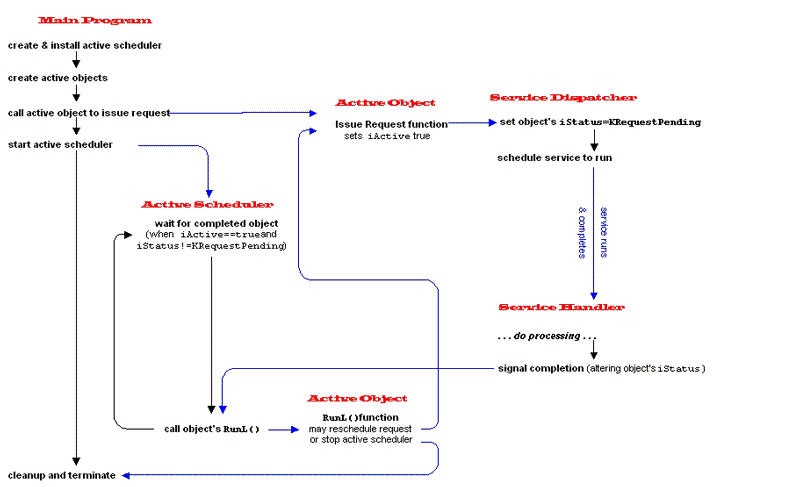Life cycle of active objects
This document describes the life cycle of an active objet.
The diagram illustrates the life-cycle of an active object.
Procedural flow follows the black arrows; control is transferred along the blue links, as follows:
-
the main program creates and installs an active scheduler
-
active objects are created; their constructors ensure that every active object is added to the active scheduler (which keeps a reference to the object in its queue)
-
an active object is called to issue an initial request. This sets the object's iActive true (indicating a request was issued but not yet completed) and schedules the underlying service, which sets the object's iStatus to KRequestPending . (If this step is omitted, no service will be requested, so no handler will be invoked and hence the active scheduler will wait forever in its loop, never calling any object's RunL() )
-
the active scheduler is started. This now takes over; control is only returned to the main program for termination when the active scheduler is stopped
-
when a requested service completes, it's handler terminates by signaling service completion; this alters the associated active object's iStatus
-
when any service handler signals completion, the active scheduler tests each object in its queues for one with iActive true (request not completed) and iStatus not set to KRequestPending (i.e. the request has been handled)
-
if the active scheduler finds an object with the above conditions, it sets iActive false and calls the object's RunL()
-
the RunL() may reschedule the request (so that the handler is again invoked when the requested service completes and the cycle continues.) or may stop the active scheduler, returning control to the main program for termination.
Copyright ©2010 Nokia Corporation and/or its subsidiary(-ies).
All rights
reserved. Unless otherwise stated, these materials are provided under the terms of the Eclipse Public License
v1.0.
